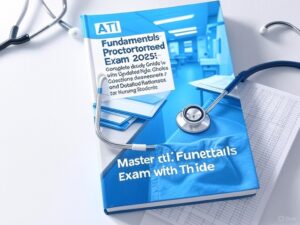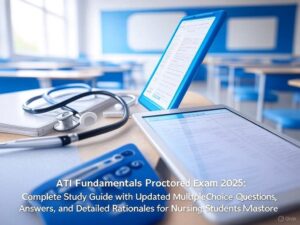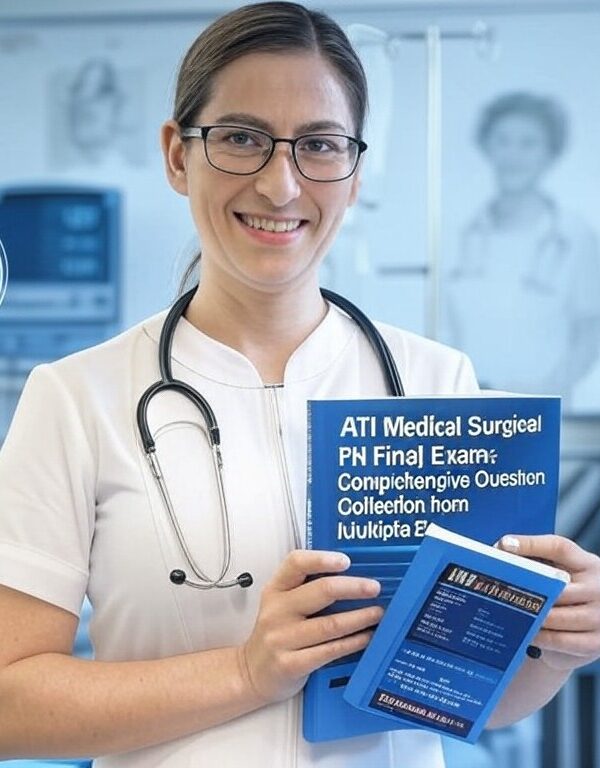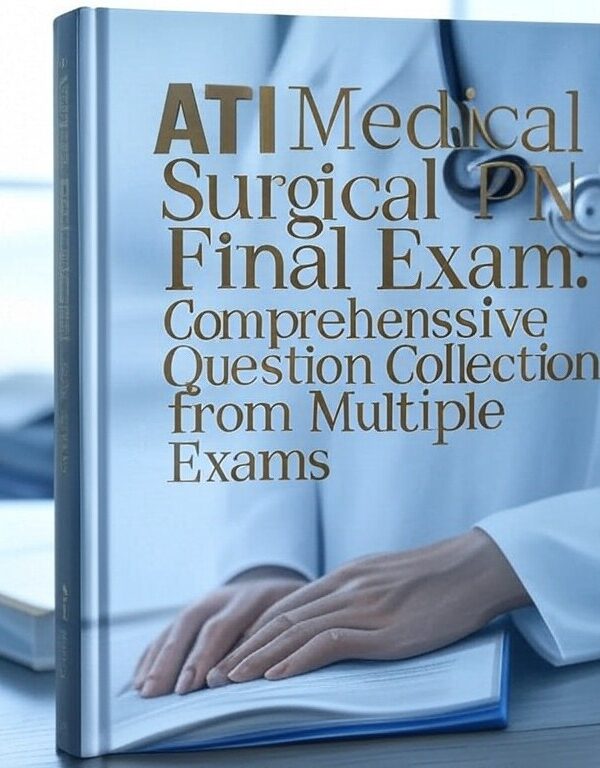-
Updated multiple-choice questions for ATI Fundamentals 2025
-
Accurate answers with detailed rationales for comprehensive learning
-
Covers all essential nursing fundamentals topics
-
Designed for nursing students preparing for the 2025 exam
-
Enhances critical thinking and exam readiness
Preview
1. NG Tube Feeding Preparation
Question:
A nurse is caring for a client who is receiving enteral feedings via an NG tube.
Which of the following actions should the nurse take prior to administering the
formula?
a. Check for gastric residual volume
b. Encourage the client to breathe deeply and cough
c. Flush the tube with sterile 0.9% sodium chloride irrigation
d. Encourage the client to take sips of water
✅ Correct Answer: a. Check for gastric residual volume
Rationale: Checking gastric residual volume ensures that the stomach is
emptying properly and reduces the risk of aspiration. It is a standard practice
before administering enteral feedings.
2. NG Tube Misplacement Indicator
Question:
A nurse is caring for a client immediately following the insertion of an NG tube. Which of
the following should indicate to the nurse that the tube is placed incorrectly?
a. The client has a dry mouth
b. The client is coughing
c. The client has active bowel sounds
d. The client is hiccuping
✅ Correct Answer: b. The client is coughing
Rationale: Coughing during or after NG tube insertion may indicate the tube has
entered the airway rather than the esophagus, necessitating immediate verification and
potential repositioning.
3. NG Tube Placement Verification
Question:
A nurse is inserting an NG tube for a client who requires gastric decompression. Which
of the following actions should the nurse take to verify proper placement of the tube?
a. Assess the client for a gag reflex
b. Measure the pH of the gastric aspirate
c. Place the end of the NG tube in water to observe for bubbling
d. Auscultate 2.5 cm above the umbilicus while injecting 15 mL of water
✅ Correct Answer: b. Measure the pH of the gastric aspirate
Rationale: Gastric aspirate should have a pH of 1–5, indicating correct placement in the
stomach. This is a safe and evidence-based method to verify placement.
4. Pain Management Without Medication
Question:
A nurse is caring for a client who reports a pain level of 5 on a scale from 0–10. The client
informs the nurse that pain medications are not an option for managing pain. Which of
the following is an appropriate response by the nurse?
a. Would you like to get you a back massage?
b. Why do you think pain meds are not going to help you?
c. You may take any herbal remedies you bring from home
d. I’m sure it will work if you just give it a chance
✅ Correct Answer: a. Would you like to get you a back massage?
Rationale: This response offers a non-pharmacologic pain relief method, respects the
client’s wishes, and promotes comfort without being judgmental or dismissive.
5. Fluid Volume Deficit
Question:
A nurse is caring for a client who has an extracellular fluid volume deficit. Which of the
following findings should the nurse expect?
a. Bradycardia
b. Postural hypotension
c. Distended neck veins
d. Dependent edema
✅ Correct Answer: b. Postural hypotension
Rationale: Postural (orthostatic) hypotension is a classic sign of fluid volume deficit as
the decreased volume leads to reduced perfusion and blood pressure drops when the
client changes position.












Reviews
There are no reviews yet.